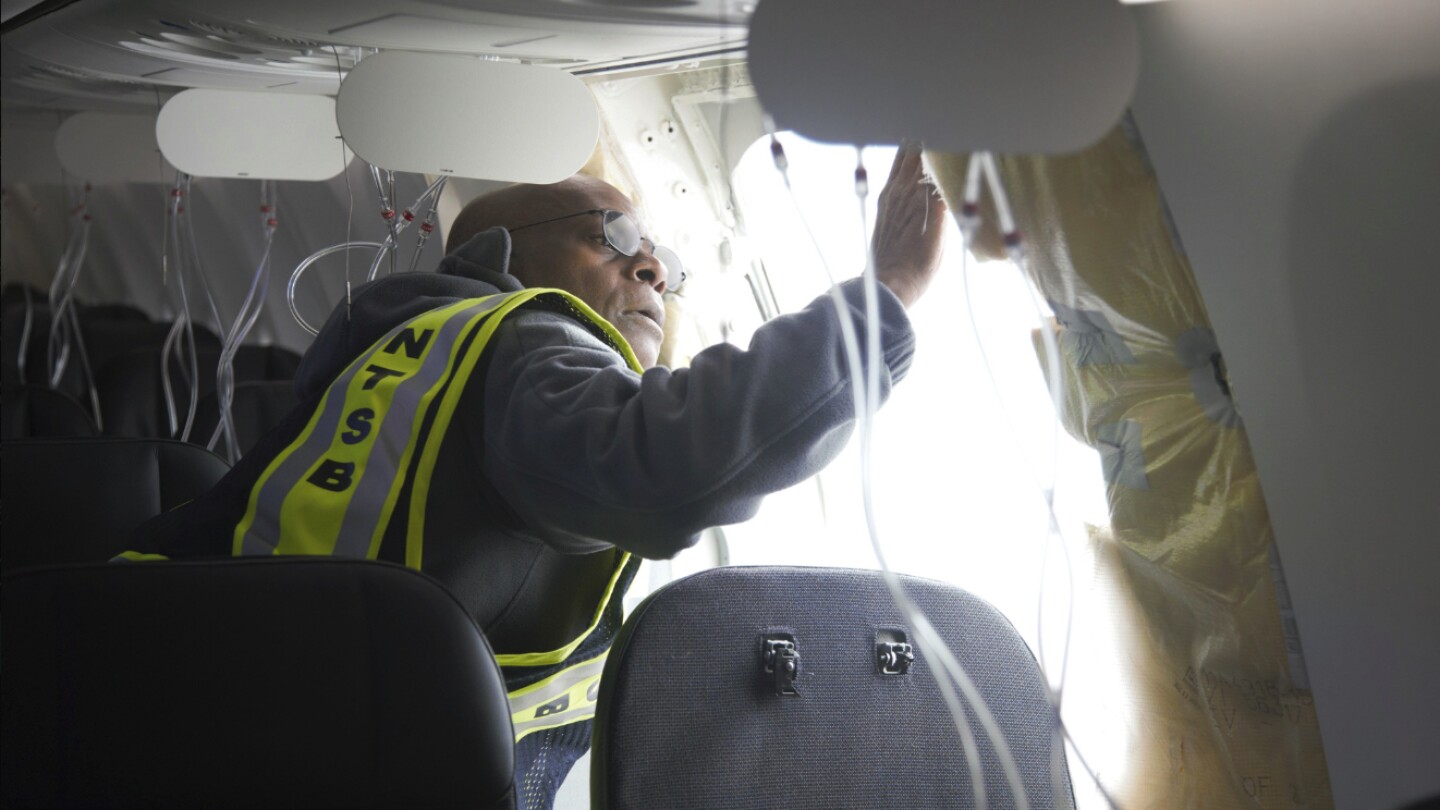The Boeing jetliner that suffered an inflight blowout over Oregon was not being used for flights to Hawaii after a warning light that could have indicated a pressurization problem lit up on three different flights, a federal official said Sunday.
Alaska Airlines decided to restrict the aircraft from long flights over water so the plane “could return very quickly to an airport” if the warning light reappeared, said Jennifer Homendy, chair of the National Transportation Safety Board.
Homendy cautioned that the pressurization light might be unrelated to Friday’s incident in which a plug covering an unused exit door blew off the Boeing 737 Max 9 as it cruised about three miles (4.8 kilometers) over Oregon.
The warning light came on during three previous flights: on Dec. 7, Jan. 3 and Jan. 4 — the day before the door plug broke off. Homendy said she didn’t have all the details regarding the Dec. 7 incident but specified the light came on during a flight on Jan. 3 and on Jan. 4 after the plane had landed.



I seem to remember reading some planes had monitoring for basically how much makeup air was being put in to keep pressure (which tells you how much leakage there is). If I had to bet, I’d say it’s that.
I say this as someone who is interested in aviation but has no formal education in it.
I’ve flown multiple types of aircraft and do not recall ever having a “high flow” warning on any of them regarding pressurization leaking out, though I will readily admit that I could have forgotten or that it may exist on certain aircraft types. I’ll assume the 737 operates like another Boeing I have flown and such a warning doesn’t exist. You’ll have overpressure warnings and cabin altitude too high (unable to pressurize properly) warnings, but I can almost guarantee that if a door were leaking sufficiently to vent pressurization enough to cause a high cabin altitude warning you would absolutely hear a significant noise coming from the door. Flight attendants are often pretty sharp on aircraft they work on frequently, and any such significant noise would be brought to the attention of the cockpit crew and maintenance. One would hope that such a noise was not present and ignored.
Regarding my musings on over/under pressure…my point was that we don’t know what the system warning was and it could be completely unrelated to the door failing or the integrity of the pressure vessel.